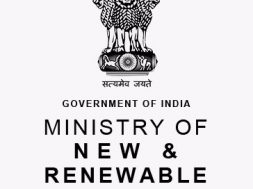
Will push thermal till 2035 to meet power demand, then reverse for net zero: Power Minister Khattar – EQ
In Short : Power Minister Manohar Lal Khattar stated that India will continue to rely on thermal power until 2035 to meet growing energy demands. After that, the country plans to scale back thermal power in favor of renewable energy to meet its net-zero carbon emissions goal. This strategy balances current power needs with long-term sustainability and environmental commitments.
In Detail : India’s peak power demand is projected to reach 458 GW by 2032, which requires thermal plants to fill the gap left by insufficient renewable energy supply, Union Minister of Power Manohar Lal Khattar said Monday. While thermal capacity addition has seen negligible growth in recent years, the power ministry has already awarded 12.8 GW of greenfield coal-based capacity in the first 100 days of the new government, Khattar said at a media briefing.
At the inauguration of the power ministry’s new Computer Security Incident Response Team (CSIRT–Power) facility, Khattar also emphasised the need to safeguard India’s power infrastructure from internal and external cyber security threats aimed at “weakening the country”.
He added that the ministry will soon release the National Electricity Plan 2023-32 for transmission infrastructure, which will require an expenditure of roughly 9 lakh crore and includes a roadmap to double high-voltage direct current (HVDC) lines, key for renewable energy transmission.
“The speed at which the demand is increasing, the supply of RE (renewable energy) is not enough, hence it is necessary to include thermal plants. When we talk of carbon emissions and achieving net zero, we will have to increase RE capacity and slowly reduce thermal capacity. We will push (thermal) projects till 2035 and after that we will reverse the process,” Khattar said.
India plans to add 80 GW of thermal capacity by 2032, with 28 GW under construction and 12.8 GW bid out. Of the capacity under construction, 14 GW is likely to be commissioned within the ongoing financial year.
Due to the variability of solar and wind generation, renewable energy is not able to supply adequate power during peak hours, which in turn increases reliance on base load capacities like thermal. India’s coal-fired thermal capacity grew to 218 GW in FY24 from 205 GW in FY20, a modest 6 per cent growth. At the same time, generation by coal-fired thermal plants grew by 34 per cent from 960 billion units (BU) to 1,290 BU.
Slowdown in capacity addition and increasing burden on existing capacities can put significant stress on the grid, potentially leading to load shedding and temporary system failures. The urgency of strengthening base load capacities is further highlighted by the expected surge in peak power demand, from 250 GW this year to 458 GW in 2032, an 83 per cent increase.
To address this, energy storage technologies such as pumped hydro and battery energy storage systems are gaining traction globally, including in India. Khattar noted that India has a pumped hydro potential of 184 GW, with 4.7 GW installed, around 6.47 GW under construction, and 60 GW under survey and investigation.
Khattar also said the awaited National Electricity Plan (NEP) will expand India’s transmission network from 4.85 circuit kilometre (ckm) to 6.48 ckm by 2032. Moreover, transformer capacity will grow from 1,251 gigavolt-amperes (GVA) to 2,342 GVA. The NEP also includes a roadmap of nine HVDC lines of 33.25 GW capacity, almost double of the currently operational 33.5 GW.
At the inauguration of the CSIRT–Power facility, Srikant Nagulapalli, Additional Secretary in the power ministry, said that all power sector utilities have appointed Chief Information Security Officers (CISOs) and are in the process of completing the first round of cyber security audits.
“In today’s interconnected world, cyber security is not an option but an essential requirement. The power sector infrastructure faces heightened threats from state-sponsored adversaries with advanced capabilities. The existing sub sectoral computer emergency response teams lack the necessary resources and expertise to address these threats effectively. The sector’s ongoing digital transformation has increased the potential for attacks,” Nagulapalli said.













